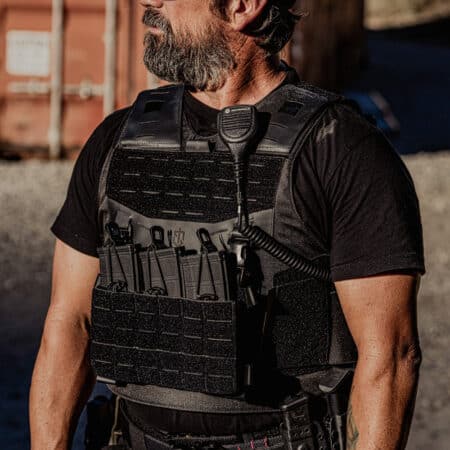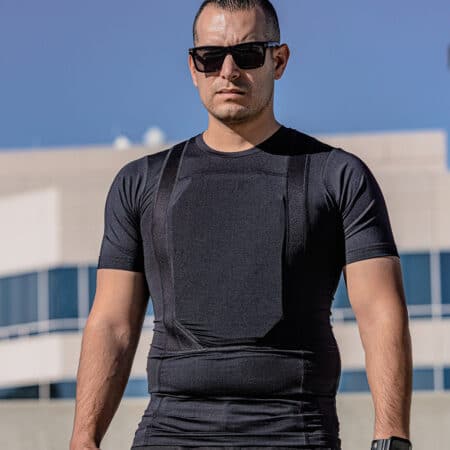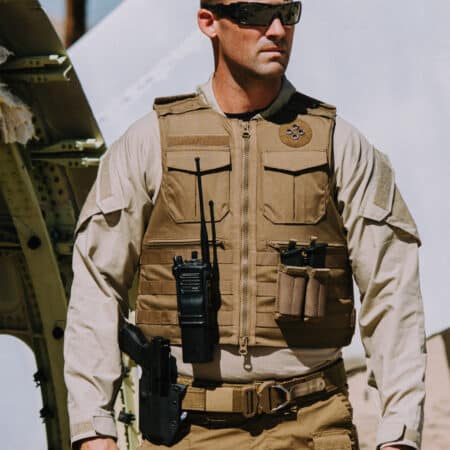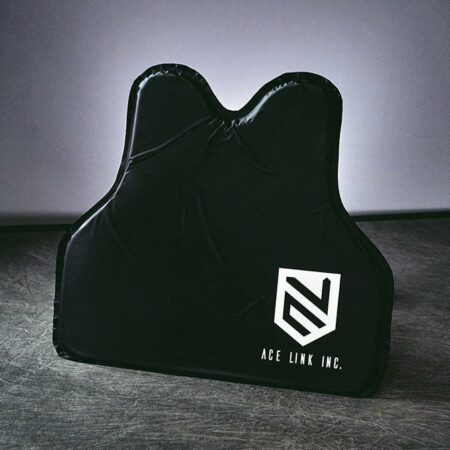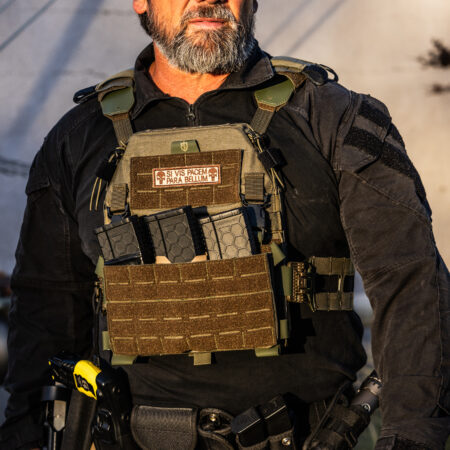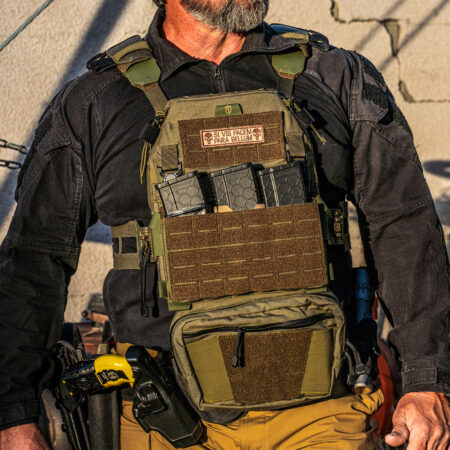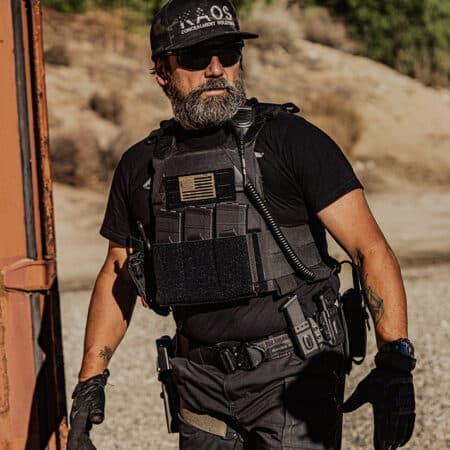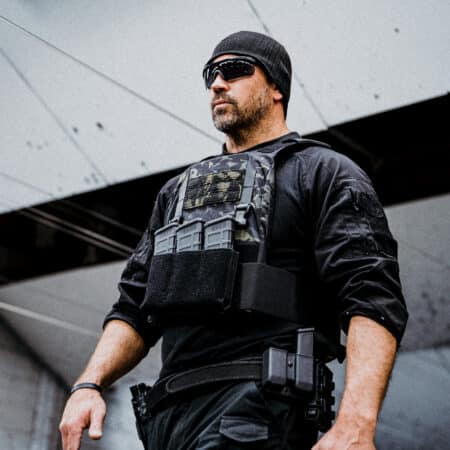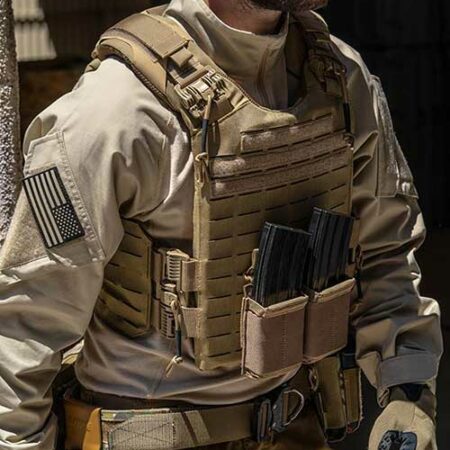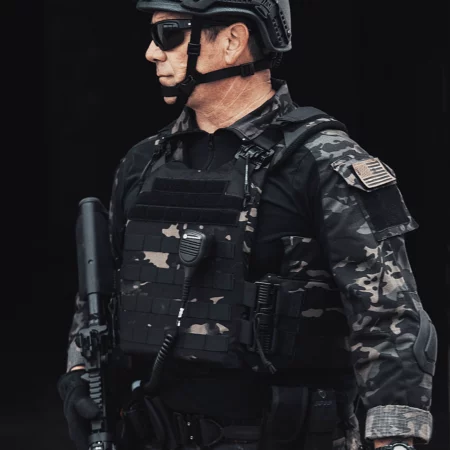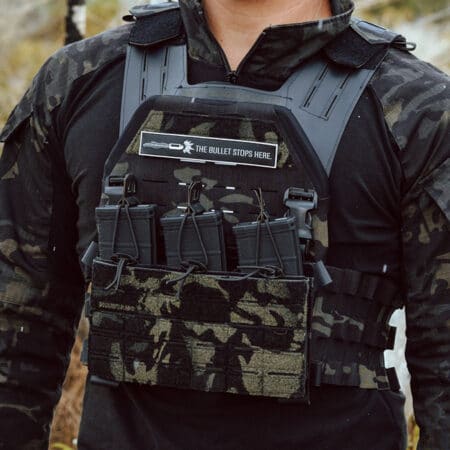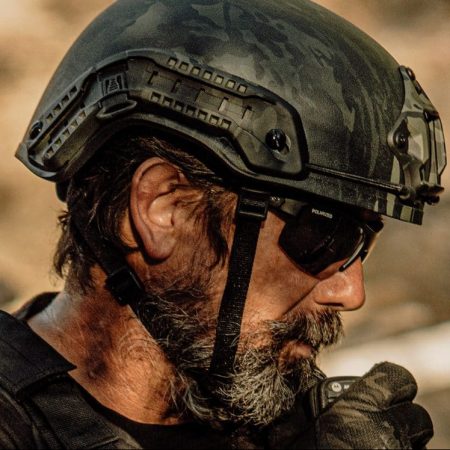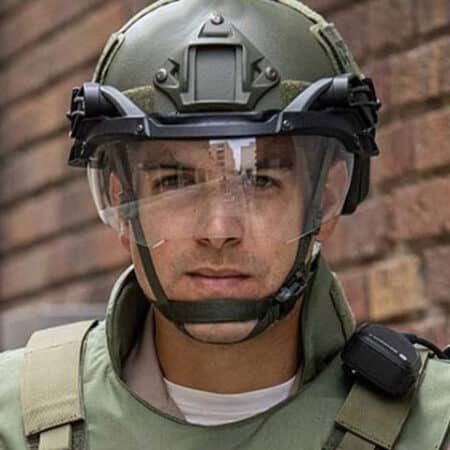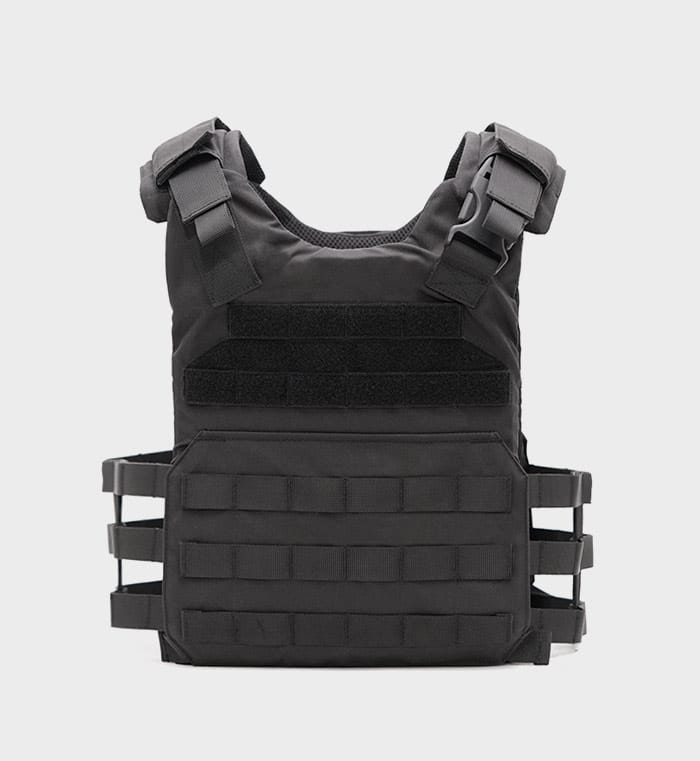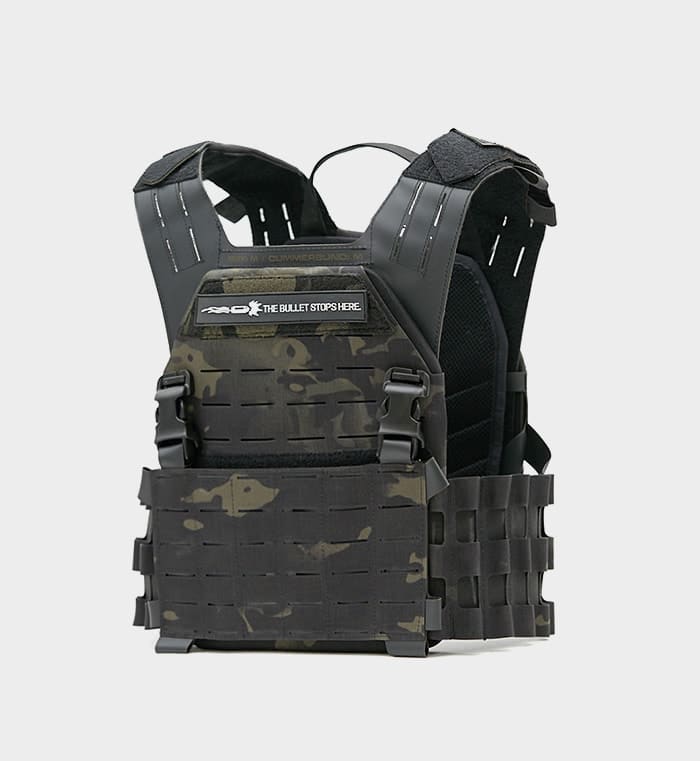- WHAT TYPES OF CERAMIC ARE USED IN CERAMIC BODY ARMOR PLATES?
- WHAT TYPES OF AMMUNITION CAN CERAMIC PLATES EFFECTIVELY STOP?
- DO CERAMIC BODY ARMOR PLATES EXPIRE?
- WHAT SIZE ARMOR PLATES DO I NEED?
- HOW MUCH DOES CERAMIC BODY ARMOR PLATE WEIGH?
- LIGHTWEIGHT YET STURDY
- NIJ CERTIFIED CERAMIC PLATES: Protection with Official Endorsement
- HOW MANY HARD ARMOR PLATES DO TACTICAL PLATE CARRIERS ACCEPT?
- HOW TO WEAR LEVEL 3 ARMOR
- WHICH CERAMIC ARMOR PLATE IS THE BEST?
When it comes to ballistic protection, there are many different kinds of armor solutions available in the market. Some people opt for aramid bulletproof vests, while others also need protection from rifle rounds. For those, we can offer Hard Armor Plates.
When it comes to rifle-level hard armor plates, materials like ceramics, polyethylene, and steel are used. Today, we are going to talk in detail about ceramic armor panels, so read on to learn more.
Key Takeaways
- Ceramic Materials: Explore armor-grade ceramics like alumina and Silicon Carbide.
- Plate Types: Learn about sintered, reaction-bonded, and hot-pressed ceramics.
- Plate Fit: Consider size and thickness when fitting plates into carriers.
- Proper Placement: Ensure plates cover vital organs for effective protection.
- Ammunition Stopping: Ceramic plates excel against common rifle rounds.
- Shelf Life: Understand the lifespan and maintenance of ceramic armor.
- Size Selection: Choose the right plate size for coverage and fit.
- Weight Advantages: Ceramic plates are lighter than steel.
- NIJ Certification: Certified plates offer reliability and legal compliance.
- Ace Link Armor: Explore Ace Link’s Level III+ PE + Ceramic plates for lightweight protection.
WHAT TYPES OF CERAMIC ARE USED IN CERAMIC BODY ARMOR PLATES?
Over the recent decades, ceramic armor has become quite popular. It is lighter than steel plates and has significantly better impact absorption properties. For the most part, ceramic armor is constructed from materials like alumina, or Aluminum Oxide, Silicon Carbide, Boron Carbide, and Titanium Diboride. Primarily, Boron carbide composites are used to make ceramic plates that protect against smaller projectiles like most bullets, whereas Silicon carbide is used to protect against larger projectiles, and therefore is sometimes used to armor helicopters.
As far as ceramic body armor plates are concerned, there are many sintered, reaction-bonded, and hot-pressed ceramic materials, like Hexoloy® Silicon Carbide commercially available that can be used for making ceramic body armor. CeraSeild is one of the most popular commercial producers of ceramic materials, and composites like CeraShield™ High-Density Aluminum Oxides or CeraShield Boron Carbides are commonly used to make Ceramic Body Armor.
WHAT TYPES OF AMMUNITION CAN CERAMIC PLATES EFFECTIVELY STOP?
One of the frequently encountered rifle rounds is the 7.62×39, commonly used in AK platform rifles, which are among the most widely distributed firearms globally, including in the United States. Therefore, safeguarding against these rounds becomes paramount.
At Ace Link, we have engineered PE + Ceramic Level III+ armor capable of withstanding multiple 7.62x39mm AK rounds, along with the formidable 5.56 M855 AP rounds. Remarkably, this armor is exceptionally lightweight, weighing only 4.40 lbs!
Another prevalent 7.62 caliber round is the 7.62×51 NATO, also referred to as .308 Winchester. Level III armor plates are engineered to halt standard full-metal-jacket .308s. However, it’s essential to note that standard Level III Armor Plates cannot effectively intercept armor-piercing rounds.
Here at Ace Link Armor we offer a comprehensive range of body armor solutions, catering to different protection needs from Level III to Level IV. Our commitment to providing reliable and high-quality armor is evident in their diverse offerings. Whether it’s Level III plates designed to withstand rifle threats like the 7.62×39 or Level IV plates engineered to provide superior protection against armor-piercing rounds, Ace Link Armor excels in meeting various ballistic challenges. Our armor plates are known for their durability, lightweight design, and ability to maintain performance consistency across different production batches. With a focus on user safety and peace of mind, Ace Link Armor stands as a trusted provider of body armor solutions for law enforcement, military personnel, security professionals, and individuals seeking top-tier protection. Here is a few examples:
Product Comparison
DO CERAMIC BODY ARMOR PLATES EXPIRE?
Believe it or not, your body armor also has a shelf life, and can eventually expire. In the case of ceramic armor, the shelf is around 5-7 years, depending on the quality of the ceramics used, and more importantly how you store them. Moisture and humidity are bad for ceramic plates, and they can contribute to their degradation. Moreover, the more ceramic armor is used the quicker it starts to degrade, even if it is not shot, after five years, it should be replaced.
You might be wondering, what will happen if you use expired armor panels, well, it might still take a hit or more from small rounds, however probably not as much as a fresh plate would. More importantly, it might lose the ability to stop the larger bullet it is rated for, and that is a risk you don’t want to take.
WHAT SIZE ARMOR PLATES DO I NEED?
Sizing a plate carrier vest is quite different from a simple bulletproof vest. You see, a bulletproof vest uses level II or Level IIIa soft body armor, which can be sized like normal clothes, however for ideally sized hard ballistic panels, you need to consider the coverage they provide on your chest.
Typically, armor plates come in four sizes, that is, small, medium, large, and extra-large. There are some sizes in between as well, but they usually have a very minor difference in size.
Small ballistic panels are 8×10 inches in size and are ideal for women or men with smaller frames. Medium plates are usually 10×12″ inches and are suitable for most males with an average height and stature. Large plates are 11×14″ inches.
The width of your body armor plate should be just inside your nipples side to side. Vertically, it should cover your torso from the top of the breastbone down to a couple of inches above the belly button. This ensures that all of your vital organs are covered by body armor.
Keep in mind that tactical plate carriers are also sized according to the size of the plates they carry, rather than the size of the person.
HOW MUCH DOES CERAMIC BODY ARMOR PLATE WEIGH?
One of the biggest advantages ceramic body armor plates have over steel plates is their weight. However, the exact weight of the plate depends upon the quality of the ceramics, the size you choose, and the NIJ armor protection levels as well.
Level III ceramic plates usually weigh around 4 to 6 lbs, however, for the most part, level IV body armor plates are made with a ceramic strike face, and steel or high-density polyethylene base, so it is a lot heavier. Generally, level IV plates weigh about 7 or 8 lbs. Some high-quality full ceramic and polyethylene blend plates can be lighter.
So, make sure to get some high-quality tactical plate carriers if you want to carry heavy body armor panels along with all your tactical gear.
LIGHTWEIGHT YET STURDY
Level III hard armor plates come in various materials, including steel, ceramics, and ultra-high molecular weight polyethylene, each with its own set of advantages and drawbacks. However, ceramic and polyethylene armor consistently outperform steel in several crucial aspects.
This preference for ceramic and polyethylene arises because steel Level III plates have a tendency to produce spalling upon impact. When a bullet strikes a steel plate, it breaks into fragments that scatter in various directions, posing a risk to the wearer and those nearby. Some armor manufacturers, like AR500 Steel, attempt to mitigate spalling by adding a rubberized strike face to their steel armor. Unfortunately, this protective coating loses effectiveness after a few shots, erasing the only durability advantage that steel armor holds over ceramic and polyethylene plates.
Ceramic plates are also utilized in crafting Level III body armor, excelling at absorbing the impact of incoming bullets and preventing fragmentation. However, they degrade with each shot and require careful handling to avoid damage from blunt force trauma, such as a fall from height, which could compromise their structural integrity.
In contrast, polyethylene armor plates offer exceptional protection and are the lightest among all materials, making them an excellent choice for long-term use. Ace Link Armor is known for producing high-quality Level III polyethylene armor plates.
When dealing with the need to withstand rifle rounds, the indispensability of hard armor plates becomes evident, whether made from steel or polyethylene. Unfortunately, these rigid plates tend to be substantially heavier than soft body armor. A steel Level III plate typically weighs between 9 to 11 pounds, requiring the use of two plates – one for the front and one for the back. Adding side plates to your armor setup could result in carrying up to 30 pounds of armor, significantly impeding mobility.
To address this challenge, modern body armor plates are crafted from ultra-high molecular weight polyethylene (PE) or ceramic composites. These materials, while considerably lighter, still offer commendable strength, even though they may not endure as much punishment as steel plates.
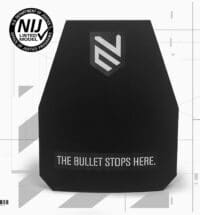
LEVEL III++ NIJ 0101.06 – STAND ALONE
Why Choose Our NIJ Certified Hard Armor Plates?
✔ Advanced Level 3++ Protection
- Swimmers Cut 10×12 Armor Plate: This isn’t just any armor plate. Offering superior ballistic protection, our plate not only meets but surpasses Level 3 standards.
- Defense Against a Range of Threats: Prepared to protect you against 6 specific rifle-caliber shots including:
- 7.62x51mm M80 ball
- 7.62 x 39mm M67,
- 7.62 x 39mm MSC,
- 5.56 × 45mm SS109 / M855,
- 5.56 x 45mm M193, and other high-velocity projectiles.
✔ Superior Ballistic Performance
- Lightweight – only 4.6 lbs and 1.2″ thin
- Our armor plate proudly upholds the benchmarks set by the National Institute of Justice (NIJ) – NIJ 0101.06. This means that it has been tested and proven to provide a specified level of protection against various ballistic threats at determined velocities.
✔ NIJ Certified Assurance
- Quality and Durability: Constructed with top-of-the-line materials, our Level 3++ NIJ CERTIFIED 10×12 Armor Plates promise robustness and resilience. Their construction is designed for long-lasting performance in the most challenging conditions, making them an indispensable tool for dedicated professionals.
NIJ CERTIFIED CERAMIC PLATES: Protection with Official Endorsement
When it comes to choosing the right body armor, NIJ certified plates stand out as the pinnacle of protective gear. These plates have undergone a stringent testing and evaluation process to meet and exceed specific ballistic protection standards established by the NIJ. The NIJ certification ensures that these plates offer unparalleled protection against a range of ballistic threats, providing a level of confidence and assurance that is unmatched.
The key features of NIJ CERTIFIED PLATES:
Performance Validation: NIJ certification involves rigorous testing protocols that leave no room for ambiguity. These plates are subjected to various ballistic tests, including being shot with specific types of ammunition at precise velocities. The plates must consistently prove their capability to stop bullets while maintaining their structural integrity. This level of thorough testing guarantees that NIJ certified ceramic plates meet or surpass the designated protection level.
Dependable Reliability: The NIJ certification provides an assurance of dependability, a vital aspect for those who rely on body armor in high-risk scenarios. Wearers can trust that their NIJ certified plates will perform consistently and reliably under real-world conditions, providing a critical safeguard when it’s needed most.
Consistent Excellence: NIJ-certified plates offer a uniform level of protection across different production batches. Regardless of when or where the plates were manufactured, they consistently meet the specified NIJ standards. This uniformity in performance ensures that wearers can confidently rely on the protection provided by these plates.
The NIJ certification provides an assurance of dependability, a vital aspect for those who rely on body armor in high-risk scenarios.
HOW MANY HARD ARMOR PLATES DO TACTICAL PLATE CARRIERS ACCEPT?
Typically, the tactical plate carriers worn by most military personnel and law enforcement officials carry two hard armor plates, one in the front and one in the back, however, in some cases, for extra ballistic protection, people might use multiple plates, two in the front and two in the back. Some people might also add Kevlar Trauma pads to their plate carriers along with the hard armor panels for some added protection.
Depending on the thickness and armor level of the plates it may be a difficult fit, especially if you have a thin and minimalistic tactical plate carrier. However, in most cases, you can accommodate a Level III and a Level IV hard body armor plate in the front and back of your tactical plate carrier.
HOW TO WEAR LEVEL 3 ARMOR
These plate carriers are commonly worn by law enforcement personnel, military forces, and specialized police units. Additionally, they serve as a versatile platform for carrying supplementary equipment like extra magazines. Ensuring the proper positioning of armor plates is essential; the upper edge of the plate should fully cover the sternum and align with the collarbone, connecting your right and left shoulders. On the back, the upper edge of the plate should align with your shoulder blades and be approximately level with the front armor plate.
WHICH CERAMIC ARMOR PLATE IS THE BEST?
If you are looking for high-quality plates that have a SAPI cut, the level III, ultralight armor plates from Ace Link are exactly what you are looking for. Generally, SAPI plates are made of ceramics, however, the PE plates have a SAPI cut, and similar ergonomics, while being lighter, more durable, and having a longer shelf life.
Weighing only 3.5 lbs, these armor panels can stop threats up to .308 Winchester. They are available in multiple sizes, including the popularly used dimensions of 11×14″ and 10×12″.




